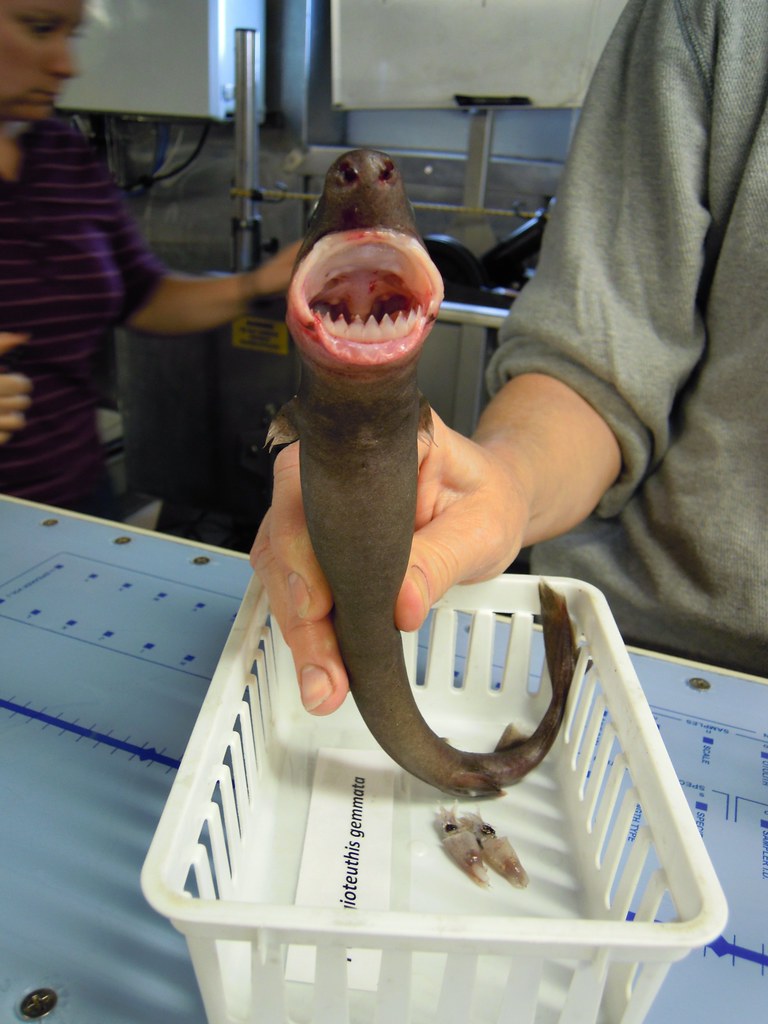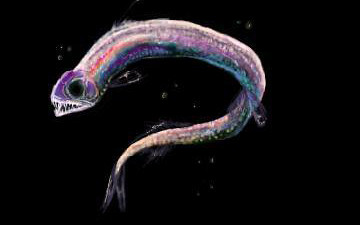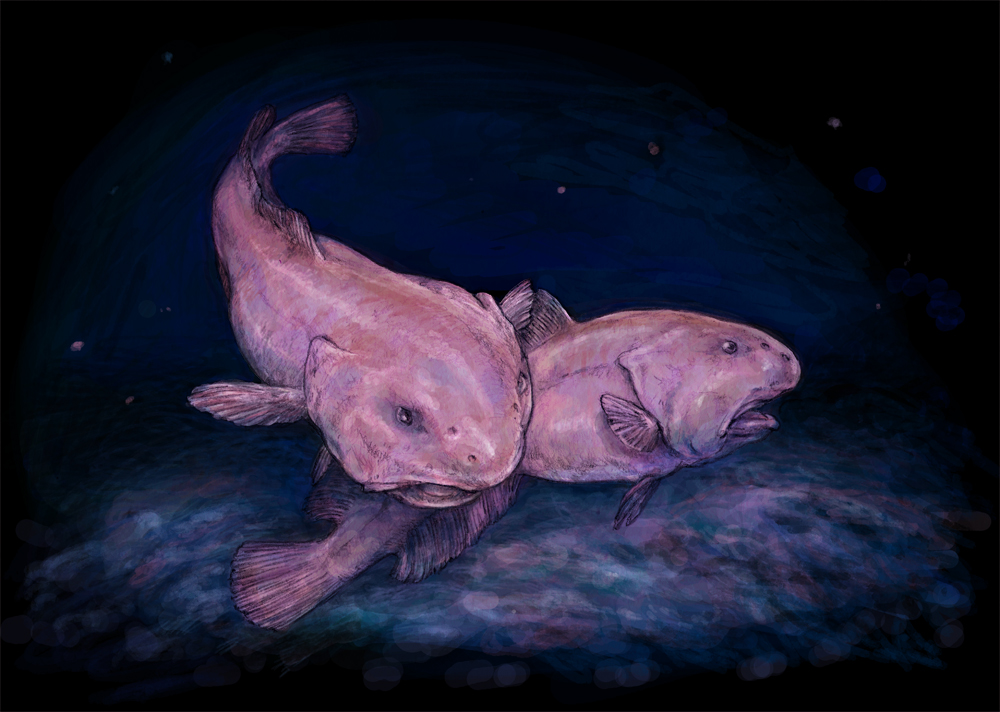Five Puzzling Deep Ocean Fishes
October 7, 2021

- Anglerfish are first on the list and are the most known deep sea fish for its glowing lure. This glowing lure is the little glowing ball sticking out of its head. It is to lure or trick their prey into coming closer for its big jaw to bite its newly caught meal. The reason its ball above its head glows is because of the bacteria in the ball! This ball of light isn’t always glowing, the anglerfish actually uses its muscular skin flap to cover it.
 Cookicutter sharks are a type of shark that we don’t have to worry about unlike great white sharks and other bigger sharks. These sharks don’t grow nearly as big as these great white sharks that grow up to 20 feet long! While Cookiecutter sharks can grow up to almost 2 feet long. They are so small that they can feed off larger animals without killing them! They do this by using its sharp, pointed upper teeth to latch on the skin of a much larger sea mammal. This puts them under the category parasites since this is exactly what parasites do!
Cookicutter sharks are a type of shark that we don’t have to worry about unlike great white sharks and other bigger sharks. These sharks don’t grow nearly as big as these great white sharks that grow up to 20 feet long! While Cookiecutter sharks can grow up to almost 2 feet long. They are so small that they can feed off larger animals without killing them! They do this by using its sharp, pointed upper teeth to latch on the skin of a much larger sea mammal. This puts them under the category parasites since this is exactly what parasites do!
 Viperfish,or also known as Chauliodus sloani, is one of the fiercest predators of the deep. Its teeth are so large that it won’t fit in its mouth! It is fierce looking, but only grows up to almost one foot. Its skull is hinged, making it so that the viperfish’s head can be rotated up for swallowing unusually large prey. With swallowing large prey though, they need large stomachs, yet it doesn’t look like they have a very large stomach. Viperfish are found in tropical and temperate waters throughout the world at depths of up to 9,000 feet!
Viperfish,or also known as Chauliodus sloani, is one of the fiercest predators of the deep. Its teeth are so large that it won’t fit in its mouth! It is fierce looking, but only grows up to almost one foot. Its skull is hinged, making it so that the viperfish’s head can be rotated up for swallowing unusually large prey. With swallowing large prey though, they need large stomachs, yet it doesn’t look like they have a very large stomach. Viperfish are found in tropical and temperate waters throughout the world at depths of up to 9,000 feet!
 Stoplight loosejaw (Malacosteus niger) actually has loose jaws like how it is in its name. Their jaws are seemingly hinged in multiple places, allowing them to be opened widely and to swing down and out in order to snare relatively large prey. The Stoplight fish produces light to see and attract prey, but Like most species in the deep sea, the stoplight loosejaw is very difficult to study and is only known from specimens that are brought up from deep nets.
Stoplight loosejaw (Malacosteus niger) actually has loose jaws like how it is in its name. Their jaws are seemingly hinged in multiple places, allowing them to be opened widely and to swing down and out in order to snare relatively large prey. The Stoplight fish produces light to see and attract prey, but Like most species in the deep sea, the stoplight loosejaw is very difficult to study and is only known from specimens that are brought up from deep nets.
 Psychrolutes marcidus, or more commonly known as the blobfish, has soft bones and few muscles and lacks a swim bladder, the gas-filled internal organ that allows most bony fish to control their ability to stay afloat in water. This gives them their blobby look when pulled up to the surface where there is less pressure. Because blobfish are found only in a few areas of the world and at depths between 2,000 and 4,000 feet below the surface of the water, they are rarely encountered live.
Psychrolutes marcidus, or more commonly known as the blobfish, has soft bones and few muscles and lacks a swim bladder, the gas-filled internal organ that allows most bony fish to control their ability to stay afloat in water. This gives them their blobby look when pulled up to the surface where there is less pressure. Because blobfish are found only in a few areas of the world and at depths between 2,000 and 4,000 feet below the surface of the water, they are rarely encountered live.

